ozone generators ???
Hey, i have a 10,000 gal chlorine pool and was looking at adding the ozonator system to reduce my chlorine and have cleaner water. Any thoughts on these systems? pros/cons?
my specs are- hayward gear, de filter, quartzite pool, no spa, Tampa Fl area. thanks
Comments (23)
poolguynj
14 years agolast modified: 9 years agoUV generation over Coronal Discharge due to your geo's humidity.
That's not so say I have changed my view towards them.
They can supplement oxidation and sanitation but not reduce the need or level of chlorine in a pool.
Scott
jump427
Original Author14 years agolast modified: 9 years agoif the og helps with cleaning and sanitation, why would i still need the chlorine at my current levels?
Related Professionals
Missouri City Swimming Pool Builders · Beachwood Landscape Architects & Landscape Designers · Wake Forest Landscape Contractors · Crystal Landscape Contractors · Fairhope Landscape Contractors · Framingham Landscape Contractors · Las Vegas Landscape Contractors · Shoreview Landscape Contractors · Bethany Decks, Patios & Outdoor Enclosures · Centreville Decks, Patios & Outdoor Enclosures · Cincinnati Decks, Patios & Outdoor Enclosures · Del Aire Decks, Patios & Outdoor Enclosures · Lebanon Decks, Patios & Outdoor Enclosures · Pecan Grove Decks, Patios & Outdoor Enclosures · Pittsburgh Decks, Patios & Outdoor Enclosuresfighting_irish
14 years agolast modified: 9 years agoWell done on the explanation Scott. I personally think the addition of an Ozone system is a waste of money. A pool with the proper level of chlorine is by far the best way to go. Most people try to lessen the amount of time their systems run to cut back on utility usage. If you want to have better sanition on a pool or spa it is better to run the pumps longer to acheive more turn overs in a day. This is the reason commercial pools have to run 24/7 in order to get 3 to 4 turn overs in a day which is required. I am not saying ozone does not work but for me not well enough to justify the expense.
Good Luck,
David
jump427
Original Author14 years agolast modified: 9 years agothanks guys, its hard to get a good feel of how things work, and real opinions on equipment from searching the net. thanks for your informative replys
sbedelman
14 years agolast modified: 9 years agoScott,
Are you aware of some work done for Florida Power and the National Spa & Pool Institute that indicated running a pool circulator on a residential pool for more than about 4 hours per day was generally unnecessary?
I'd be interested to know what you think of their methods and conclusions.
poolguynj
14 years agolast modified: 9 years agoThere are so many holes in that, it's not funny.
Here are some of the biggest:
If I turn off my pump during the heat of the day in the Florida sun in the middle of the Summer, nearly all my free chlorine will either gas off or be consumed by bather load. Unless you manually add chlorine to the pool every day, something bad will happen, whether its algae, skin rashes, bio-slimes, whatever. That is why I think over 60% of the people changed their timers. They had problems.
Single and dual speed electric motors found on pool pumps cannot withstand tens of thousands of start and stop cycles. That is a blatant exaggeration. This is more true today than ever since manufacturing costs have been reduced to maximize profits.
Pools designed today tend to be more hydraulically more efficient. We also have variable speed pumps that offer significant reductions in energy consumption.
I could go on and on and on. A lot has changed since 1984.
Scott
sbedelman
14 years agolast modified: 9 years agoI think you are misinterpreting the article. Their point is that most pools could be adequately cleaned and sanitized with much lower turnover rates than generally employed.
What I take away from what they found are a couple of observations.
Cleaning
If you can skim the dirt off before it has a chance to sink then that is a good thing because skimming is energy efficient compared to filtering (especially if you have venturi skimmers).
Once dirt becomes water logged and begins to settle it goes directly to the bottom and is not cleaned by filtering so long run times are mostly just filtering water that is already clean because the dirt isn't in suspension. Better to run a robot cleaner.
Sanitizing a pool doesn't require high flow rates nor long run times. You don't need to be pumping water at 40, 50 or 60 gpm to disperse sanitizer and its expensive to do so.
Are you saying you think these observations are wrong or just taking issue with the specific numbers touted?
I'd agree that modern pumps and controls allow a degree of flexibility not available to the authors, but all that means is if the underlying principles are sound we have much better tools now to implement with.
poolguynj
14 years agolast modified: 9 years agoWhen this study was done, builders typically used 1.5" plumbing and 1.5 HP pumps, only going to two inch if there was an attached spa. Neither is particularly efficient. Most reputable builders use at least 2" plumbing and spec in smaller pumps that use less electricity. A lot has changed in the 20 years since that study was done.
Erosion feeders needed more time then they are suggesting. People didn't/don't want to feed the pool manually every day. Filtering is not the only reason to run the pump.
Owning a pool is a luxury. Typically, people in higher income brackets would have a pool. It is what it is. Luxury and hobbies are expensive. They always have been and always will be.
Scott
sbedelman
14 years agolast modified: 9 years agoNow I'm really confused. As an engineer my training is to design the best possible system I know how. You seem to be saying that it is Ok to install a poorly configured pool because its a luxury. I'm having a hard time seeing the logic of that.
As far as I can tell the study makes a strong case that filters rarely need to be run more than a couple of hours a day to achieve adequate cleaning of the pool water. Do you have any reason to believe this is incorrect?
With regards to erosion feeders would you know what percentage of the time they need to run in order to operate within design limits?
I am aware that filtering is not he only reason to run a pump which is why I listed filtering and sanitizing separately in my post. In fact the whole point of a well executed system would be to have designed it so that filtering, sanitizing, floor cleaning (if a robot or in floor system is employed) are set to the minimum time and flow necessary to accomplish the task.
One of the biggest things that has changed in the last 20 years is technology. Equipment is better, people are smarter (as you noted they are using larger pipes) and we know more about how pools work. That makes it possible to look at long held beliefs and revisit them to see if they are true.
What's also true is that energy is more costly that it used to be. Just as your typical sedan used to get about 12 mpg because they burned gasoline inefficiently there is some reason to suspect that pools systems likewise were not particularly careful in how they used electricity or natural gas.
This article attempts an early look at the problem and came up with some observations, which from our vantage point some years bear looking at. My impression is the pool industry is not good at change. Low initial cost rather than low operating cost seems to be paramount so that even extremely simple improvements with short payback terms are rarely implemented.
Bottom line is what exactly are you saying is untrue in article? How many hours to you think a pool needs to run for there to be sufficient filters and sanitizing? They have put numbers on the table and explained the methodology behind their conclusions. While you have been strident in your belief that they are wrong, so far I haven't heard what you know the correct number to be and why.
I'm just looking to find out what the right answer is. Whether its yours, theirs or somewhere in between makes no difference to me.
poolguynj
14 years agolast modified: 9 years agoI am not implying that building poorly designed pool circulation systems is acceptable in today's market. 25 to 50 years ago, they didn't have about the same concerns we have today and with more modern era computer aided designs, it's taken things to a whole new level.
What I am saying is that pools built in that era were not as concerned about head loss, power consumption, etc... They were built from hand drawn plans with manually calculated engineering specs and each was an expensive project to design. Recalculating for the most efficient systems lost out to previously calculated equipment numbers for the sake of labor costs.
People are no smarter today than they were 5000 years ago. Our tools have evolved significantly though.
Their information seems to have a marketing spin attached. They omitted the additional reasons for running the pump entirely, i.e. sanitation. The writers either didn't understand it or they didn't care since it went contrary to the paper's purpose. The 60% drop out is telling.
Erosion feeders, assuming they are set correctly, were originally designed so that a load of 3" pucks would last about a week with an approximately 8-10 daily run depending on the pool size and environment.
Old erosion feeders such as the Hayward CL200 in line feeder could be plumbed with 1.5" or 2" lines but it's internal venturi compressed the opening to a 1" opening inside. Talk about an inefficient design! But people put them in by the thousands. Then came off-line systems like the CL220.
I am a strong proponent with cost reductions in the operation of a residential pools. My service company is less costly than most since I don't depend on maintaining retail or construction arms. People that can't do it or won't do it themselves for whatever reason call me. I don't do weekly vacuumings so if they want that service, they will have to call a different company. I do point my customers to sites such as TroubleFreePools.com where the "Keep Maintenance As Cost Effective As Possible" mentality is maintained. That doesn't mean it isn't a luxury with luxury costs associated with it. Can those costs be reduced? Usually.
Scott
lbridges
14 years agolast modified: 9 years agoA point made in the study, worth discussing (in addition to it's main focus being power savings) IMO, is that their conclusions were drawn primarily due to dense material falling into the pool. They specifically say it had less impact to the more northern tier of Florida (where we are currently encountering a large pollen problem). Who knows how it applies in NJ, CA, or anywhere in-between.
The problem I see with these sorts of studies is that the pertinent caveats get deleted as they pass around the Internet, and those less informed pick up bad habits based on incomplete understanding.
sbedelman
14 years agolast modified: 9 years agoThe limiting factor on how long a pump has to run is either
1) the filter
2) the sanitizer (an erosion feeder for now )
3) the heater
4) the cleaner robot.
Assume for the moment that the article is correct that most dirt is either at the surface or the bottom and not suspended in the water. Test the water quality and set the turnover for a filtration time where further increases in time result in no increase in water quality.
Because conditions vary (temperature, load etc) you probably want to have a couple of these profiles, but the idea seems sound. Check the water quality, if its at the target and not getting better with additional run time, cut the run time because you aren't doing anything.
However the selected run time is subject to a floor which is the minimum necessary for all the other equipment to function properly. Assuming your numbers are correct for the erosion feeder that would be about 8-10 and given that pressure robots only need to run a few hours a day the feeder would appear to be the limiting factor.
In the case of the pool with venturi equipped skimmer the flow rate to move 40-50 gpm through the basic is only 8-10 gpm to the return (if you aren't familiar with this kind of skimmer the return goes to the skimmer and this flow is used rather than suction make the skimmer work). This means the entire pool can operate on less than 20 gpm for filtration and sanitizing.
Now the largest 400,000 btu gas heater only requires 40 gpm and most gas/heat pump heater require far less. Assuming a heat loss of 500,000 btu/day (which is large) the pool heater would only need to run a bit over an hour a day at 40 gpm.
So in order for the sanitizer and heater to do their job a pump only needs to run 8-10 hours total with at most 1-2 hours at 40 gpm. Assuming a 35,000 gallon pool that is under 15,000 gallons per day or about .41 turns/day. If you don't have venturi skimmers just revise the above flow rates to those necessary for operation, but even running 40 gpm for the full time (10 hours) its less than .70 turns per day.
I'd say it would appear the article has merit. While it isn't clear if the run time can be as low as 3 hours a day (although its possible) it certainly appears that turnovers of .5 to 1 are achievable and turnover (as commonly recommended) of 1-2 per day are excessive.
sbedelman
14 years agolast modified: 9 years agolbridges, my apologies for not addressing the point you raised, but I missed your post.
You raise a good point. It wasn't my intention to imply this work was conclusive. Frankly I think it is far from perfect for a number of reasons and you have added another. Rather I posted it because it at least raises an interesting question, do we know if guidelines that are so widely accepted are correct?
Even more important they suggest what sounds like a reasonable method for determining how long a filter needs to run (I think we already have an answer for the sanitizer). Test the return water. If it is as clean as the suction water, there is no reason to be running the filter. There might be a better or more complete method, but its a start.
Pool owners spend a lot of time testing the water to make sure water parameters, including sanitization is where it should be and for good reason, the consequences of failing to do so are dramatic and potentially very costly. Yet we spend very little time thinking about filtering, or at least over filtering. Again with good reason, the consequences are less obvious and onerous (a high electric bill). But that doesn't mean its impossible, quite the reverse.
Dismissing the study as imperfect misses the point. Calling a pool a luxury in order to justify poor design makes no sense. A more reasonable response should be to say, interesting data, we should try and learn more and see if it possible to rethink how we operate our pool equipment in a way that maintains water quality yet consumes less energy. It is a noble goal and one that appears likely to pay off.
Two of the biggest advances towards this end would be ECM motor powered infinitely variable speed pumps, like the Intelliflo and venturi skimmers. Where previously pumps had to be sized for the maximum flow (like when the heater was going) flow rates can be set for whatever function is currently being called for. This is a massive change.
As for venturi driven skimmers where previously it required pumping 40 gpm through the suction line, all the piping, filter, pump, heater with their respective losses (and energy consumption) to achieve 40 gpm through the basket, these skimmers require only 8 gpm to move the same 40 gpm of water. That is a big deal.
Even without reduced turnover times just these two changes can make an enormous change in the energy use of a pool. The possibility of lower run times on top of these lower flow rates when running, merely add to the energy saving opportunity.
This is not esoteric stuff. Pumps die and need to be swapped out and there have been numerous discussions on this forum asking what the expected energy savings are of replacing a single speed pump with an Intelliflo (or a two speed pump). The answer if you just swap out but program as before is not much. The real gain and its big, is to use the capability of your new pump to run at any speed to run at the right speed for each task and to only run as long as is necessary. Luckily this is easy to do.
As best I can tell the resistance to do so is mostly due to a lack of understanding of how to calculate the proper flow and turnover rates. Not wanting to make a mistake that will come back to bite them and unwilling to admit they don't understand how to calculate the proper answer its easier to put out vague assertions about why its bad or will cause problems.
I'm an engineer. I don't think its scary when you don't know something, its a challenge. Either you poke around until you find someone who does (hence my posts here) or if it turns out nobody knows you propose a method for figuring it out, put it out there and see if it appears sound (which was why I posted the article and keep trying to get a fruitful discussion going).
As for me I'm in the final stages of installing a pool with venturi skimmers (long in use in commercial pools), carefully sized pumping, gentle curves and a low back pressure filter and MPV (off the shelf from Pentair, nothing special). The robot will be a pressure driven 380 but because the pump is variable speed I won't need a boost pump (saved $$ and much more efficient due to the Intelliflo's ECM motor).
The whole system will run at 16 gpm when filtering, which given the head will result in power consumption of less than a quarter of a standard single speed pump. It pops up to 40 gpm when heat exchanger (I'm using hot water from the same heat pumps that heats and cools the house to heat the pool) comes on, but that is rarely going to be more than 3 hours a day. Even if I ran the system 24/7 my payback for the pump is no more than a year. If it turns out running less than that is possible all the better.
So please excuse the long post but if anyone is interested in this kind of thing and wants to keep bouncing ideas back and forth I'd greatly appreciate it. Problem solving is a team sport.
just-a-pb
14 years agolast modified: 9 years agoWow,
There are so many things I want to comment on, but this one really caught my eye."(I'm using hot water from the same heat pumps that heats and cools the house to heat the pool)"
Can you please explain further. I didnt know such a thing existed.
lbridges
14 years agolast modified: 9 years agosbedelman,
Not to worry - I'm a physicist - which for those who know neither - a physicist is kinda like an engineer except we don't know how to do anything in a practical sense.
My pool is at the stage of deck then plaster, etc. I will be running a Pentair VS-3050 and a Pentair IC-40 SWCG (on a 16K gal pool) - the latter of which has a flow requirement of 30 GPM.
I am interested in how long to run the system from a cost/benefit perspective balancing filtered water/energy use and chlorine generation/SWCG duty cycle & unit size.
sbedelman
14 years agolast modified: 9 years agojust-a-pb the equipment to heat and cool the house is made up of two 5 ton air sourced heat pumps. These are the standard off the shelf kind of thing you see all the time hooked up to air handlers to supply a house with hot and cold air except in my case they hook up to a box that supplies hot and cold water.
The two heat pumps can be used in tandem, both for hot or both for cold or separately one supplying hot water the the other cold. There are separate hot and cold water tanks. The cold tank is used to supply the air handlers for air conditioning. The hot water goes to the radiant floors, a heat exchanger for the domestic hot water and a heat exchanger for the pool.
The water comes from the pool, to the pump, the filter and then the heat exchanger and then to a gas heater (for those time I want to heat the pool up fast). Ten tons of heating is about 120,000 btu. I'm guessing the pool losses no more than 500,000 btu per day, maybe a lot less so the heat pumps should be able to maintain the temperature running 4 hours per day.
The nice thing about heat pumps is that the warmer the air the less work they have to do to suck heat out of it so a heat pump running in the summer is going to be very efficient. The nice thing about my setup is I already had the heat pumps so the marginal cost to use them to heat the pool was only the heat exchanger and a pump for getting the water from tank to the primary of the exchanger.
Finally because the heat pumps are ordinary off the shelf heat pumps they are inexpensive to repair (everyone knows them) and cheap to replace. So far they are heating the house rather nicely. We'll have to see how things go once the pool is up and running but I see no reason to expect major problems.
sbedelman
14 years agolast modified: 9 years agolbridges I don't know.
My pool is about 35,000 gal and I need to run about 40 gpm when heating so what I did is design the system so that the flow could be reduced to 16 gpm when the heater was off, primarily by specifying venturi skimmers rather than regular ones. That alone result in a significant energy reduction. So my first question would be do you really need to run 30gpm when the heater is off or could that be reduced? You need to figure that out.
I don't yet know about turnover rates. As best I can tell no one really has looked at this for residential pools. Its just easier for everyone involved to over filter and stay out of trouble rather than to understand what is really required to do the job correctly. Frankly that is understandable but it cost money if you do it that way.
Assuming there article I posted isn't completely off base it would appear that one can probably filter as little as 6 hours or around .25 turns if one pays careful attention to detail. I am going to start at about 1 turn/day and once I have a good methodology to measure water quality for filtering I'll begin to reduce it and watch the effect.
One thing I don't know is what exactly causes a pool to get dirty. Is dirt mostly a function of whether the pool is open or it is more an issue of skimmer effectiveness? What is "dirt" actually made up of? Is it primarily stuff falling into the pool, tracked in by people or what? Is load a strong or weak driver of dirt?
If dirt is mostly driven by the pool being open then adjusting the run times is going to be easy (a microswitch on the pool cover than changes the program to the Intellifo) but if its more a function of load (number of people) that is going to be tough to automate so I'd probably just up the turn rate and run a bit more than I need to and perhaps put a button in (again to the Intelliflo) I could push manually to extend the run time when I knew there were going to be a lot of guests.
The nice thing about a variable speed pump that is easy to program for both flow and cycle is that you don't have to get it all right up front. Its easy to change the programming as you learn more.
just-a-pb
14 years agolast modified: 9 years agoThanks, all water system makes sense.
I have been looking for the elusive AC unit that will cool house and heat your pool.
I always thought is was crazy cooling my house with AC units spitting out hot air, at the same time I heat my pool with a heatpump spitting out cold air.
I have seen add on products that recover heat from hot compressor gas, but most of the new high seer units have low temps.
The only company I have found to make one is out of business.
Seems like the multimillion dollar product!sbedelman
14 years agolast modified: 9 years agoNo one makes an off the shelf system that includes everything you need to heat/cool the house plus heat the pool. That said most good geothermal guys have the experience to put together just such a system and my getup is essentially the same thing but using air instead so its not beyond their capability.
I looked very hard at heating the pool with waste heat from the house and decided that at least in Oregon it wasn't worth the effort. We rarely need AC and the days we do we probably don't need to heat the pool. Plus there was the nasty problem of what to do with the heat on a day when the building needed cooling and the pool didn't. Either one needed duplicate systems or the pool would overheat.
A well designed system is always a balancing act between fixed cost (equipment) and operating cost. Obviously the equation is different for different situations and locations. In our case the pool is only used during the swimming season to boost the temperature to comfortable range rather than allowing off season swimming so the usage is low. That's why I choose to redeploy the existing equipment at a small cost in efficiency.
Having looked long and hard at the problem I'd say the best case for recovering waste heat from the AC to heat the pool would be a mild climate with a long swimming season. In that case it would be likely the heating load for the pool would be modest so a small inexpensive water to water heat pump running a long cycle during the day would match nicely with the AC load of the structure. Capital equipment cost would be low and the control logic straight forward.
Another instance would be a ground source heat pump. It isn't generally recognized that these can have a severe problem of overloading due to time it takes for heat (or cold, the lack of heat) to migrate from the area around the coils out into the soil. This can result in a real hit to efficiency. What is very nice is if you dump heat to the ground in the daytime for building AC and then extract heat during the night for heating the pool this problem goes away since you aren't dependent on the earth to conduct the waste heat away instead you just store it there for a few hours and take it back out. Its not quite as simple as this because you still need to size the field for winter heating but it can help where heating and cooling loads are mismatched (cooling being larger) which they almost certainly would be in much of the south and south west.
My favorite design is one that is rarely used anymore which is an open loop ground sourced heat pump. Where water is plentiful (like central Florida or if you are near a lake) you pump the water extract heat (or dump it) and return the water to the source. This kind of system can have very high efficiency, well beyond an air sourced system, and is comparable in cost.
You are correct that heat pumps can recover heat from hot compressor gas but this option is not available on mass market residential products and I wanted to stay with equipment that was mainstream for reasons of cost, reliability (its well tested), serviceability etc.
If you are looking for equipment that will supply hot and cold water the magic words are "reverse cycle chiller." Essentially its a standard heat pump with a heat exchanger to convert the hot or cold gas into hot or cold water. A couple of companies supply them in the US but they are anything but mainstream for residential use. Its quite different in China and you will see a lot of them on the Internet, but obviously not an option for most people.
I'd really like to see an off the shelf solution but with the low price of natural gas and most homeowners focused on the cost of purchase and not operation I don't expect to see anyone coming out with an air sourced heat pump with pool heat option anytime soon so for now unless you want to have a geothermal guy install a system you stick with separate heat pumps for the house and pool spitting out hot air from one and cold from the other.
womanowned
9 years agolast modified: 9 years agoIs this a new thread? I firmly believe in the value of UltraViolet light ozone generators. Some argue that chlorine is all you need, but there are studies published on the negative effects of a total chlorine pool. It is bad for the skin, hair, eyes and anyone with allergies or skin conditions, etc. It can exacerbate asthma in children. It is also more expensive to have to buy all the man-made chemicals needed for a chlorine pool. There are tons of opinions out there. This is just mine.
al_novak82
5 years agoIf you are looking for a chlorine free pool check out Oxygen Pools. It's a chlorine-free system that uses ozone.
Mystic Pools, LLC
5 years agoWe have been using Del Ozone for some time now. Their AOP models use a Germicidal UV light and Ozone for the production of hydroxyl radicals making a powerful sanitizer.
Models treat up 25,000 gallons and 50,000 gallons. It allows for maintaining a very low chlorine residual or in some cases no need for chlorine. Models can be outfitted on existing pools.
Right now my client has the AOP 50 on their 35, 000 gallon outdoor pool. We are able to maintain a sanitized environment with only a 1/4 PPM of chlorine.
The pool is equipped with an automatic cover. We also installed a de-gas vessel to eliminate the ozone bubbles which could damage the auto cover material.






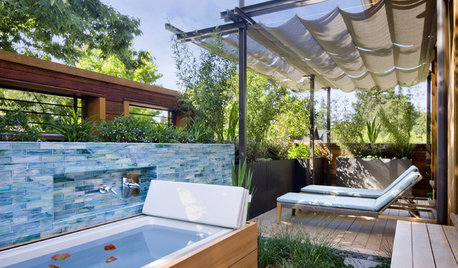
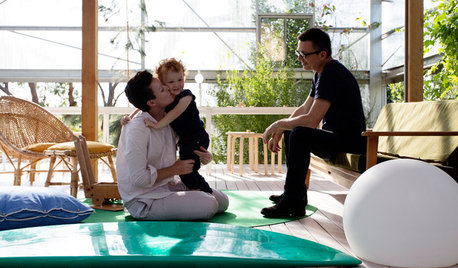
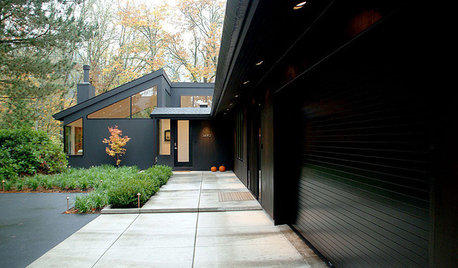






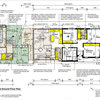
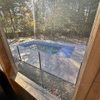


poolguynj